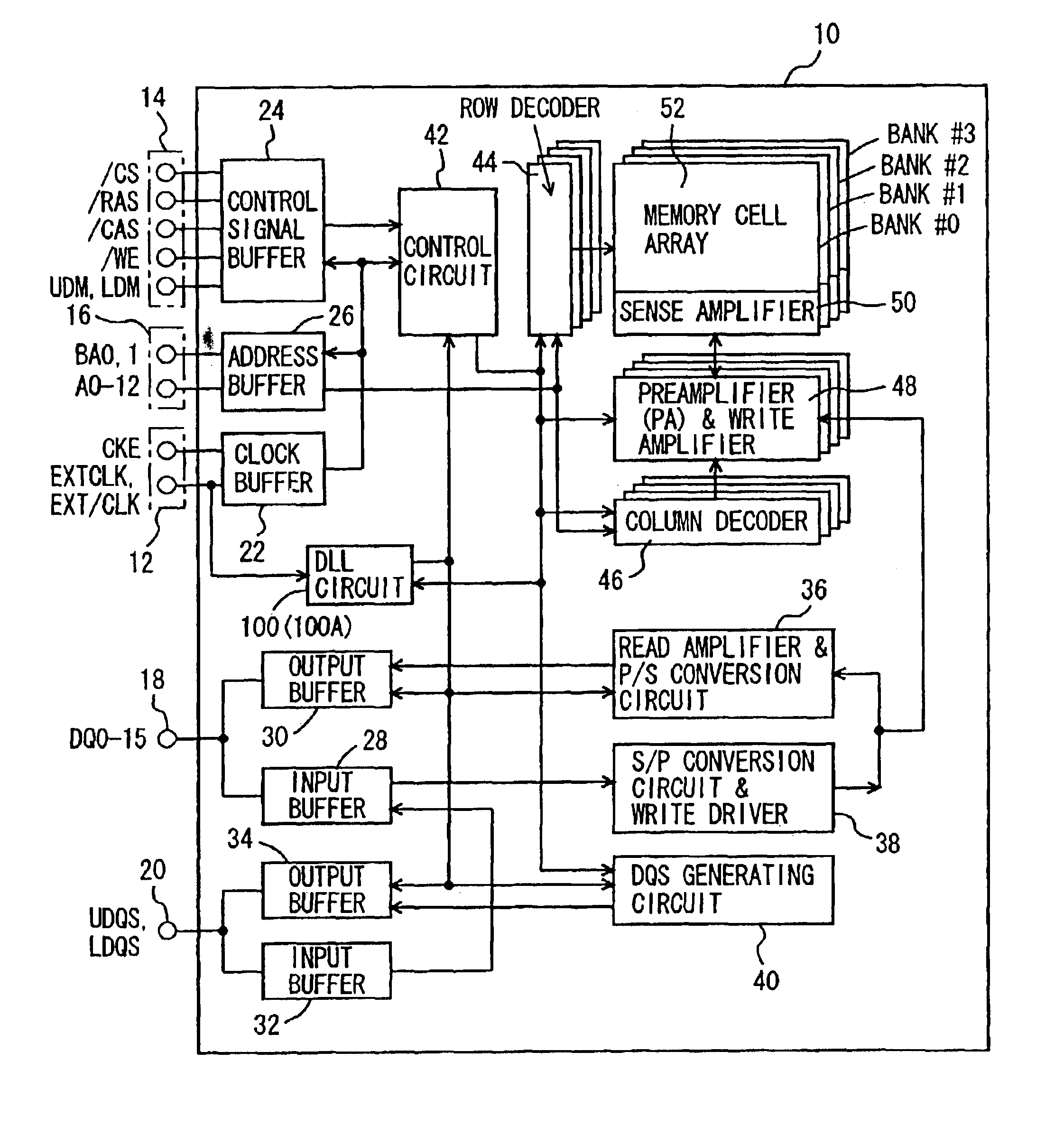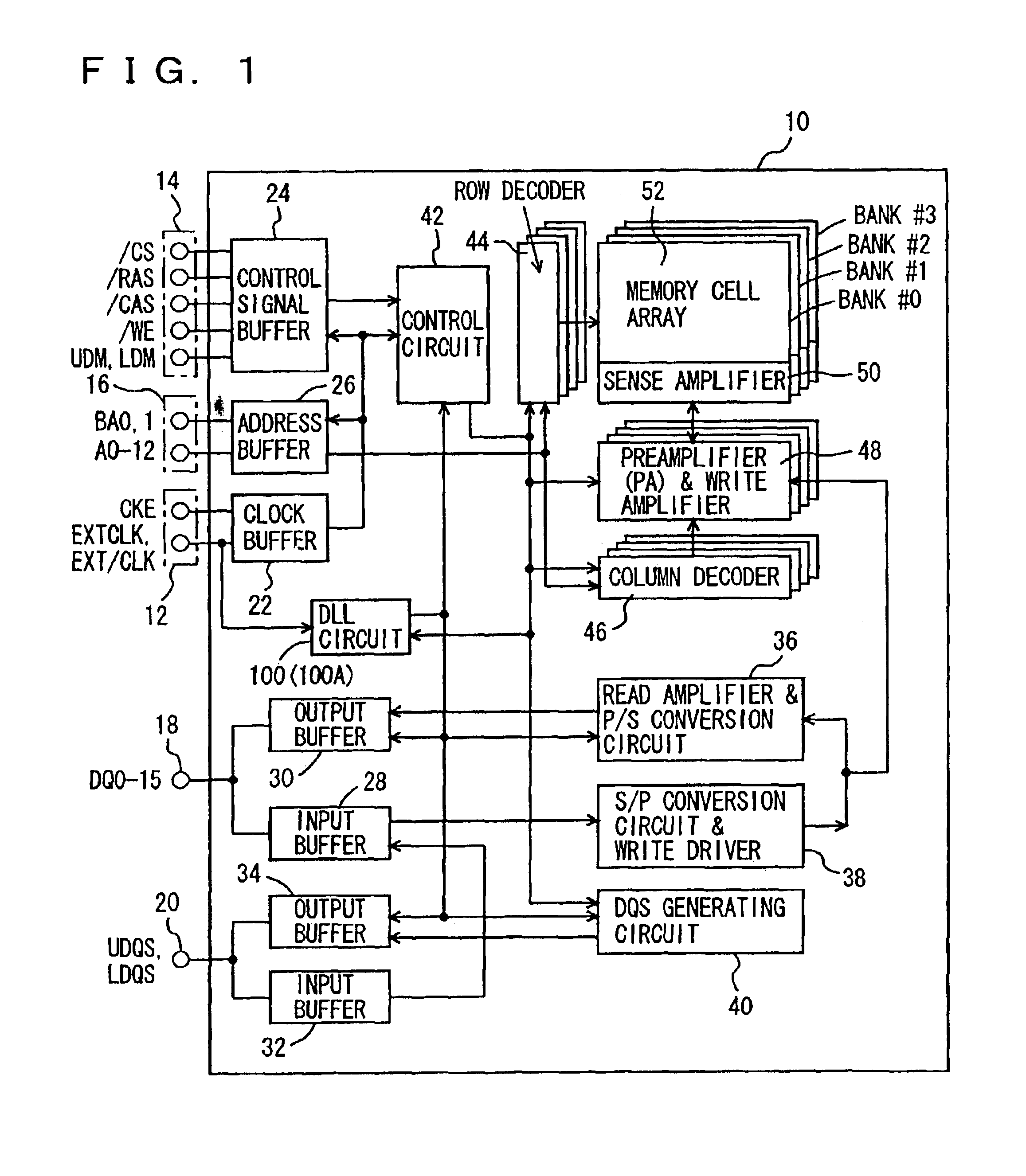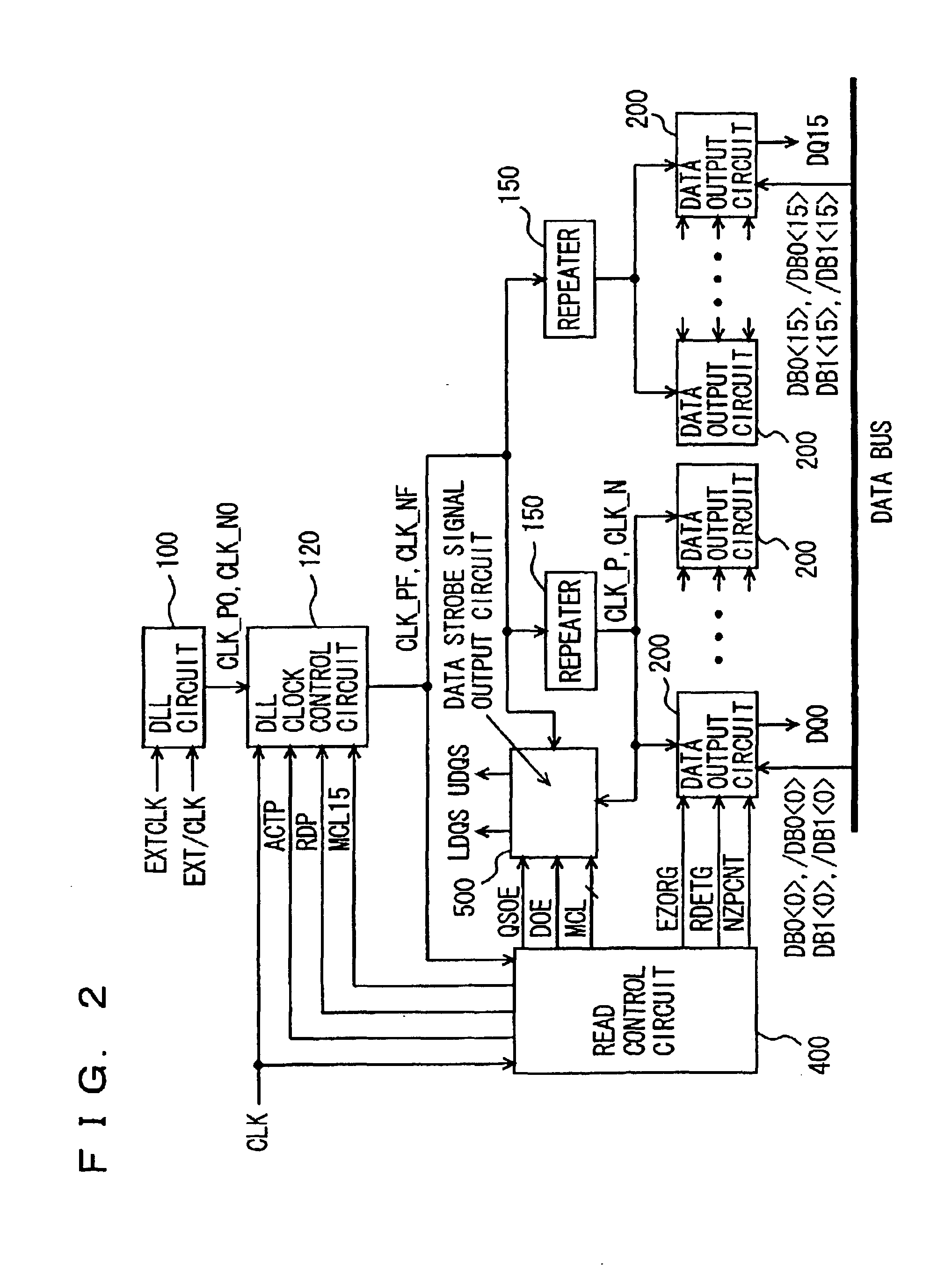Semiconductor memory device with clock generating circuit
- Summary
- Abstract
- Description
- Claims
- Application Information
AI Technical Summary
Benefits of technology
Problems solved by technology
Method used
Image
Examples
Example
First Embodiment
FIG. 1 is an overall block diagram schematically showing a configuration of a semiconductor memory device according to the present invention.
Referring to FIG. 1, a semiconductor memory device 10 includes: a clock terminal 12; a control signal terminal 14; an address terminal 16: a data input-output terminal 18 and a data strobe signal input-output terminal 20.
Semiconductor memory device 10 further includes: a clock buffer 22; a control signal buffer 24; an address buffer 26: an input buffer 28 and an output buffer 30 related to data DQ0 to DQ15; and an input buffer 32 and an output buffer 34 related to data strobe signals UDQS and LDQS.
Semiconductor memory device 10 further includes: a read amplifier & P / S (parallel / serial) conversion circuit 36; an S / P (serial / parallel) conversion circuit & write driver 38; a DQS generating circuit 40; and a DLL circuit 100.
Semiconductor memory device 10 further includes: a control circuit 42; a row decoder 44; a column decoder 46; ...
Example
As described above, since semiconductor memory device 10 according to the first embodiment 10 is installed with DLL clock control circuit 120 controlling transmission of DLL clocks CLK_PE and CLK_NF based on a detected operating frequency, DLL clocks CLK_PE and CLK_NF are transmitted only in a proper period according to an operating environment; thereby achieving reduction in active standby current and stabilization of data output operation.
According to semiconductor memory device 10, in a case where an operating frequency is low, since DLL clocks CLK_PF and CLK_NF are transmitted after READ command is received, power consumption during active standby is reduced, while in a case where an operating frequency is high, since DLL clocks CLK_PF and CLK_NF are transmitted when and after ACT command is received, a data output operation is guaranteed.
Furthermore according to semiconductor memory device 10, DLL clock control circuit 120 detects an operating frequency and determines whether o...
Example
Second Embodiment
In the first embodiment, determination of a frequency is performed during a period when signal EN is at H level in frequency determining circuit 1202, and signal EN is a signal having a cycle obtained by dividing a cycle of internal clock CLK_PO into halves (a half cycle of internal clock CLK_PO) with frequency dividing circuit 1212 of frequency determining circuit 1202. The number of frequency divisions determines a sampling frequency at which a frequency determination is performed, and the reason why a signal obtained by dividing a frequency of internal clock CLK_PO in such a way is that power consumption in frequency determination circuit 1202 is reduced. In the second embodiment, the number of frequency divisions is set to larger in order to decrease power consumption in frequency determining circuit 1202.
FIGS. 29 to 32 are circuit diagrams showing configurations of frequency dividing circuits included in frequency determining circuits in a semiconductor memory ...
PUM
 Login to view more
Login to view more Abstract
Description
Claims
Application Information
 Login to view more
Login to view more - R&D Engineer
- R&D Manager
- IP Professional
- Industry Leading Data Capabilities
- Powerful AI technology
- Patent DNA Extraction
Browse by: Latest US Patents, China's latest patents, Technical Efficacy Thesaurus, Application Domain, Technology Topic.
© 2024 PatSnap. All rights reserved.Legal|Privacy policy|Modern Slavery Act Transparency Statement|Sitemap



